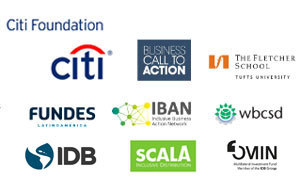Panelists
Expanding access to goods and services for the billions of people at the base of the pyramid (BoP) is not simply a growth opportunity – but a business necessity. However, reaching low-income markets often requires navigating fragmented - or in many cases, nonexistent - distribution and sales networks.
In recognition of this complexity and the challenges facing micro-enterprises in downstream value chains, a growing number of large companies are employing inclusive distribution network models that seek to empower low-income entrepreneurs and strengthen enterprises while helping companies increase sales and reach new markets. For the handful of these networks that have successfully reached scale, there are many more that have remained siloed CSR initiatives, morphed into non-profit entities, or simply faded away.
This online discussion is part of the Inclusive Distribution Challenge and coincides with the launch of a new discussion paper, which identifies three models of inclusive distribution and highlights eight emerging lessons on how to achieve scale. This online discussion aims to crowd-source more examples and input on business actions and partnerships and help prioritize Phase 2 of the Challenge focused on specific solutions to scale.
1. What are some examples of inclusive distribution networks, and how are they expanding opportunities at the BoP and creating value for businesses?
2. What are the most significant challenges to scale these models, and how do they vary across models, regions, and/or industries?
3. What are some emerging lessons and solutions on achieving scale, and where are there opportunities for more partnerships?

